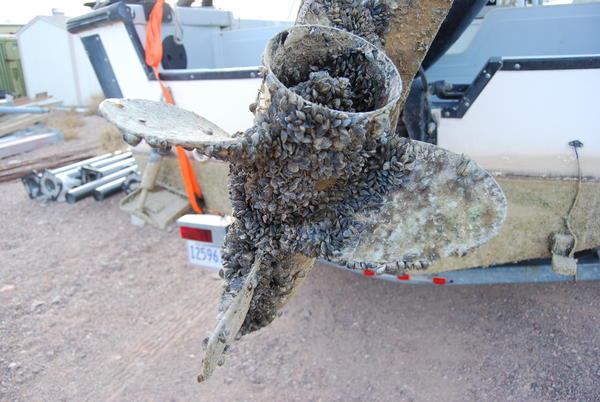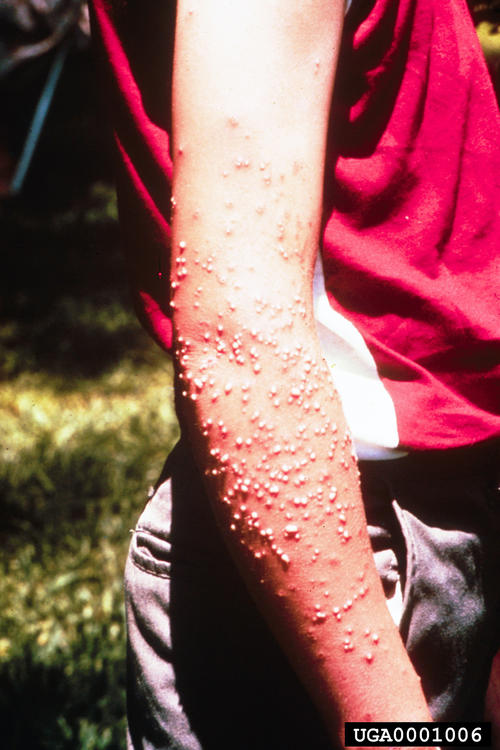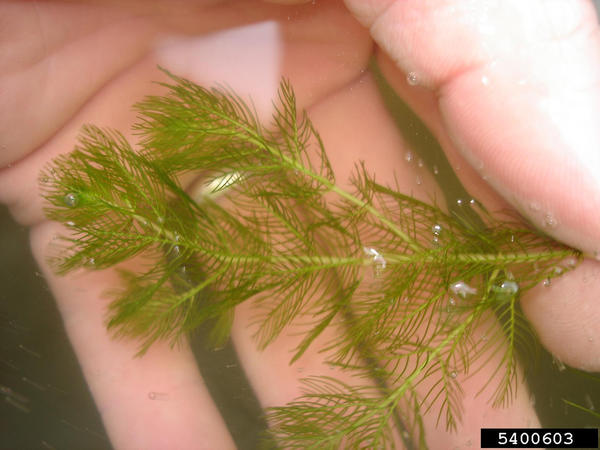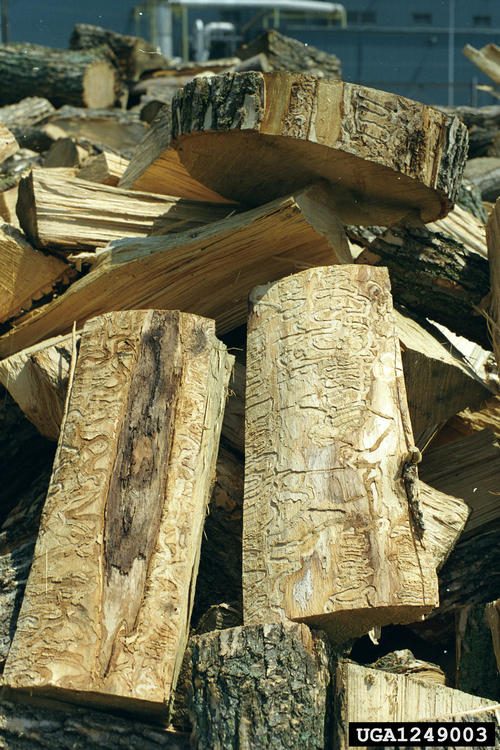What Is An Invasive Species?

Quagga mussels, relatives of zebra mussels, are becoming major problems as they invade a body of water. Not only do they out compete native mussels, but they quickly colonize any surface they can including the blades of boat motors. The extra drag decreases the efficiency of the motor, and can cause it to completely shut down. Image courtesy of the US National Park Service.
An invasive species is any species not native to an area, and whose introduction causes or is likely to cause major disturbance and harm to the environment, economy, or public health of that area. Invasive species can be plants, fungi, animals, or diseases.
Why Is This A Problem?
Whether you realize it or not, the problem of invasive species is having a direct effect on your lifestyle. When Johnson grass or Asian soybean rust enters a farmland, the farmer’s crops will have a smaller yield. The process of controlling those problems results in a higher cost for the food you eat. As hydrilla plants and zebra mussels clog boat motors and cooling systems, they increase the cost of operating recreational and commercial boating industries, and the costs are then passed along to you as a consumer. Attacks from Africanized honeybees and red fire ants can ruin picnics and outdoor recreation opportunities in the southern states, possibly even killing the people and animals they attack.
The vines of kudzu and Japanese honeysuckle create tripping hazards and may even completely hide a hiking trail. European starlings invade the nesting sites and sometimes also destroy the eggs of many species of native birds we enjoy listening to and watching. Chestnut blight caused a major change in American forests and negatively impacted the recreational and logging industries that depend on those trees. Dutch elm disease, emerald ash borer, and Asian longhorn beetle, as well as ornamental pear trees, honeysuckle and garlic mustard, are all poised to create another dramatic decline in our native forests.

Red imported fire ants can aggressively sting people or animals that are near the colony, causing painful white pustules. While not usually fatal to humans, a large number of stings can kill small animals. They also are attracted to electrical equipment such as air conditioner units and traffic light control boxes, where they cause short-circuit problems and equipment failure. Image courtesy of Murray S. Blum, University of Georgia, Bugwood.org.
There is no way to hide from invasive species. Many estimates indicate that in the United States alone, the combined environmental damages and economic loss due to exotic, invasive species is several billion dollars per year, perhaps as much as $120 billion per year. Ignoring invasive species now only makes future control more difficult and more expensive. As farmers in fields or homeowners in yards, collectively as taxpayers or individually as consumers, every person is somehow affected by these problems and their associated costs.
Just A Few Of The Species Of Concern:
There are so many invasive plants, we created a separate page to talk about them. Insects such as the Emerald ash borer and Asian longhorn beetle. Animals such as the Asian bighead carp. Quite a few diseases (sometimes carried by other invasive species) including sudden oak death and thousand cankers disease.
What Can I Do To Help?
Everyone:
Volunteer with natural resource agencies to control invasive species. Educate yourself and keep up to date on the status of these and other pests. Learn to identify the invasive species in your area and avoid passing through them. Report any occurrence of invasive species to your local county extension agent, State Forestry Division office, or to other state or local natural resource or agricultural agencies. The sooner invasive species are detected, the easier and cheaper it is to control them.
Spread the word; tell your neighbors if you see invasive species on their land. Don’t move firewood. Buy firewood from areas close to where you will be using it. Burn everything before returning home (don’t take it with you, don’t leave it behind).
Homeowners / Small–plot Gardeners:

Eurasian watermilfoil has been identified as an "aquatic nuisance species" (ANS) by the Kentucky ANS Task Force. It is one of many species of invasive aquatic plants that were probably introduced by improper disposal of aquarium or water garden refuse, and is now threatening waterways across the country. Photo courtesy of Graves Lovell, Alabama Department of Conservation and Natural Resources, Bugwood.org.
Do not empty aquariums or dump houseplants or pets into the wild. Remove or eliminate from your property any junk piles or other places Africanized bees can nest. Change the water in bird baths often to prevent mosquitoes from breeding. Remove and control populations of invasive species on your own land. Until you are able to rid your garden of invasive plants, be responsible and remember to remove and destroy seed heads before they can spread.
Do not plant or move an invasive species, avoid using invasive species at all costs. Check to see if a plant is invasive before planting it. There is a wide variety of beautiful, easy to care for native plants available as alternatives. Think about the characteristics of the invasive plant you are replacing. Look for an alternative plant list for your state/region and talk to your local native plant society or exotic pest plant council. These organizations will be able to suggest suitable native replacements.
To avoid spreading seed of invasive plants, learn to recognize infestations and avoid passing through them. Don’t share invasive plants with other gardeners, but rather talk to them about invasive species and how you plan to help in the fight against them.
Farmers / Utility Workers / Natural Area Managers–Workers:
Always use weed–free hay and feed for your animals. Use only native plants for wildlife food plots since native plants provide much better food and cover. Control invasive species before the start of harvesting activities. Invasive plants spread quickly after disturbance. Reducing populations before disturbance is the best defense.

Moving firewood long distances can also transport emerald ash borer, hemlock wooly adelgid, gypsy moth, sudden oak death, and many other harmful insects and diseases contained in that wood. By not moving firewood, and by burning all of it before you leave, you can help prevent the spread of these problems into new areas. Image courtesy of Troy Kimoto, Canadian Food Inspection Agency, Bugwood.org.
Be sure to control invasive plants along fence rows, ditches and other areas adjacent to fields. Remove or eliminate from your property any junk piles or other places Africanized bees can nest. Empty the water from puddles, buckets, or bins to prevent mosquitoes from breeding.
Special considerations for cogongrass infestations: contact your local Forestry Commission Office or your County Extension Office as soon as possible. Mowing through or near the area, especially if it is flowering, may aid in dispersing the seeds. Performing soil work, such as disking or grading, could carry fragments of roots to other areas, spreading this noxious weed. Prescribed burns of cogongrass can quickly and easily get out of control – consult with Forestry Division personnel before burning.
Outdoor Enthusiasts / Hunters / Campers:
To avoid spreading seed of invasive plants, learn to recognize infestations and avoid passing through them. Don’t move firewood. Buy and use firewood that is close to your campsite. Burn everything before returning home (don’t take it with you, don’t leave it behind).
Between trips, or preferably before leaving an infested area, be sure to clean your boots, shoes and brush off your clothes after being in an area with invasive species. Clean your gear, truck bed, tires and equipment after working a site. Remove all seeds and other plant parts to prevent spreading seeds, insects or spores to a new location.
Before leaving a body of water, drain all water from your boat, motor, bilge, live well, and bait containers access. Remove visible plants, animals and mud from your boat. Dispose of unwanted bait in the trash, and never release plants or animals into a body of water unless they came from that body of water. Before entering another body of water, be sure to clean and dry the boat and equipment.
For More Information
Visit the www.invasive.org website and the National Invasive Species Information Center. The Arboretum has a separate page discussing invasive plants in more detail, and has more plant–specific links on that page.
